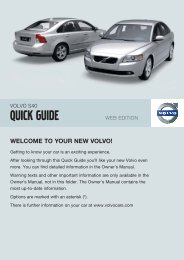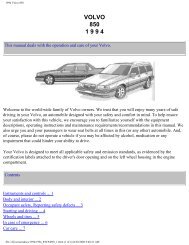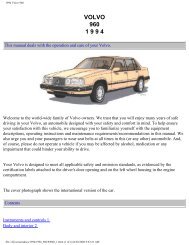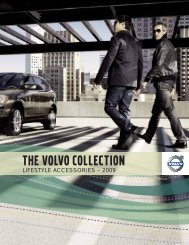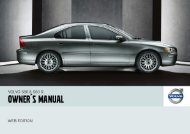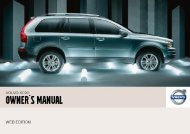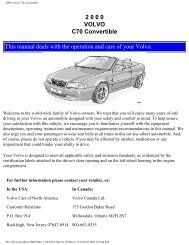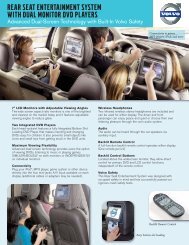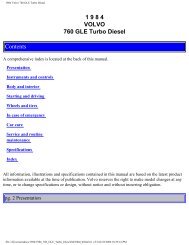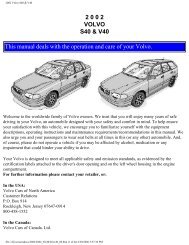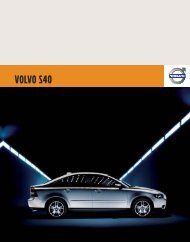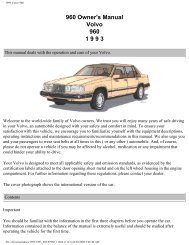V50 w646.book - ESD - Volvo
V50 w646.book - ESD - Volvo
V50 w646.book - ESD - Volvo
You also want an ePaper? Increase the reach of your titles
YUMPU automatically turns print PDFs into web optimized ePapers that Google loves.
09 Maintenance and service<br />
09<br />
Battery<br />
Battery care<br />
WARNING<br />
Batteries can generate oxyhydrogen gas,<br />
which is highly explosive. A spark, which<br />
can be generated if you connect the jump<br />
leads incorrectly, is sufficient to make the<br />
battery explode. The battery also contains<br />
sulphuric acid, which can cause serious<br />
burns. If the acid comes into contact with<br />
eyes, skin or clothing, flush with large quantities<br />
of water. If acid splashes into the eyes,<br />
seek medical advice immediately.<br />
There may be two different types of battery.<br />
They are fully interchangeable with each other.<br />
The service life and function of the battery is<br />
influenced by factors such as the number of<br />
starts, discharging, driving style, driving conditions<br />
and climatic conditions.<br />
IMPORTANT<br />
Always use distilled or deionised water (battery<br />
water).<br />
For the battery to function satisfactorily:<br />
• Regularly check that the electrolyte level is<br />
correct (A) and never fill above the level<br />
mark.<br />
• Check all cells. Use a screwdriver to remove<br />
the cell caps (or the cover).<br />
• If necessary, top up with distilled water to<br />
the battery’s maximum mark.<br />
• Fit the cell caps (or the cover) firmly.<br />
NOTE<br />
The life of the battery is shortened if it becomes<br />
discharged repeatedly<br />
NOTE<br />
An expended battery must be recycled in an<br />
environmentally responsible manner as it<br />
contains lead.<br />
190



